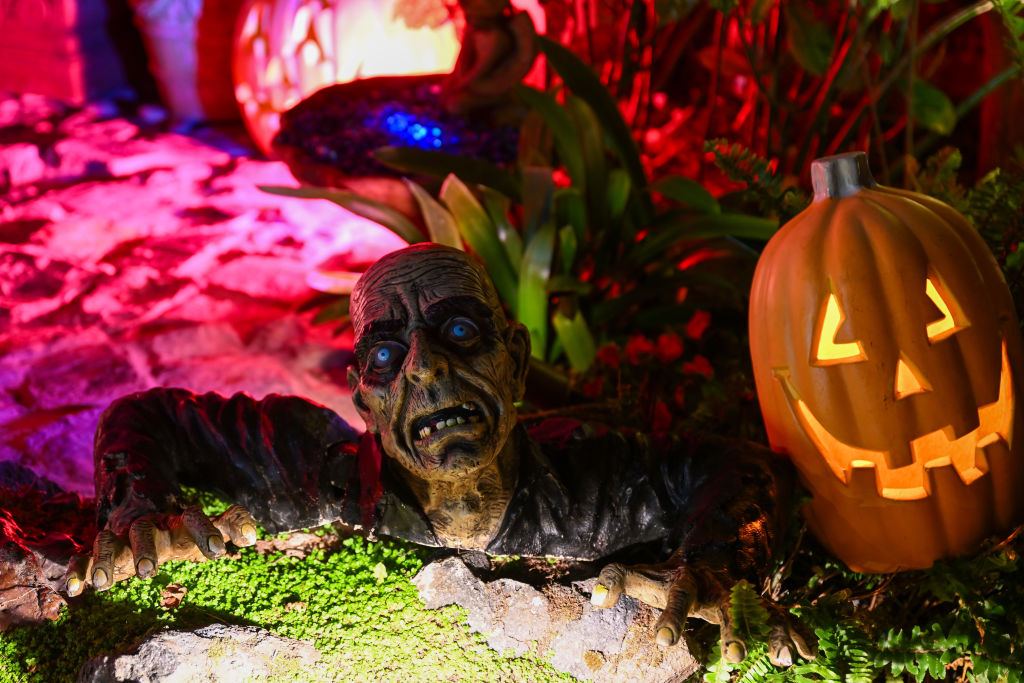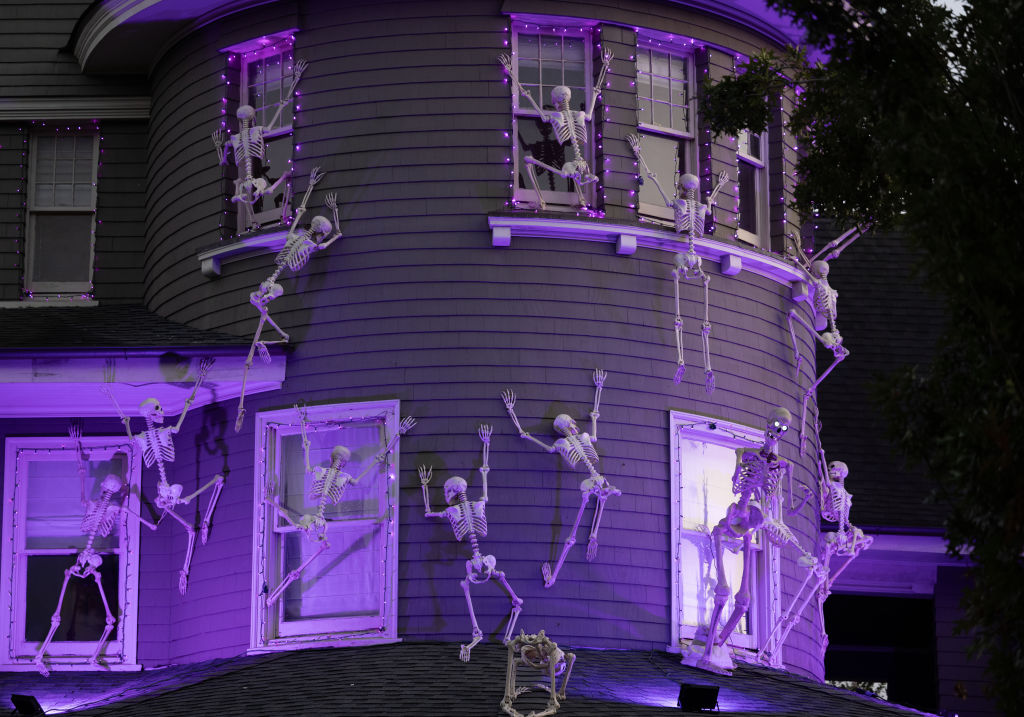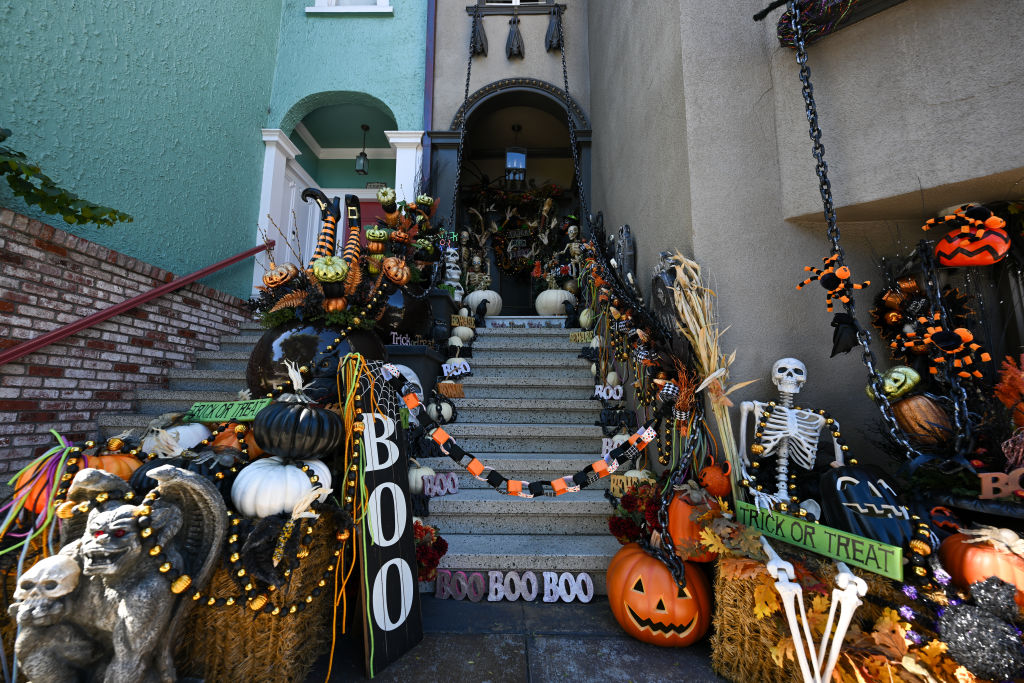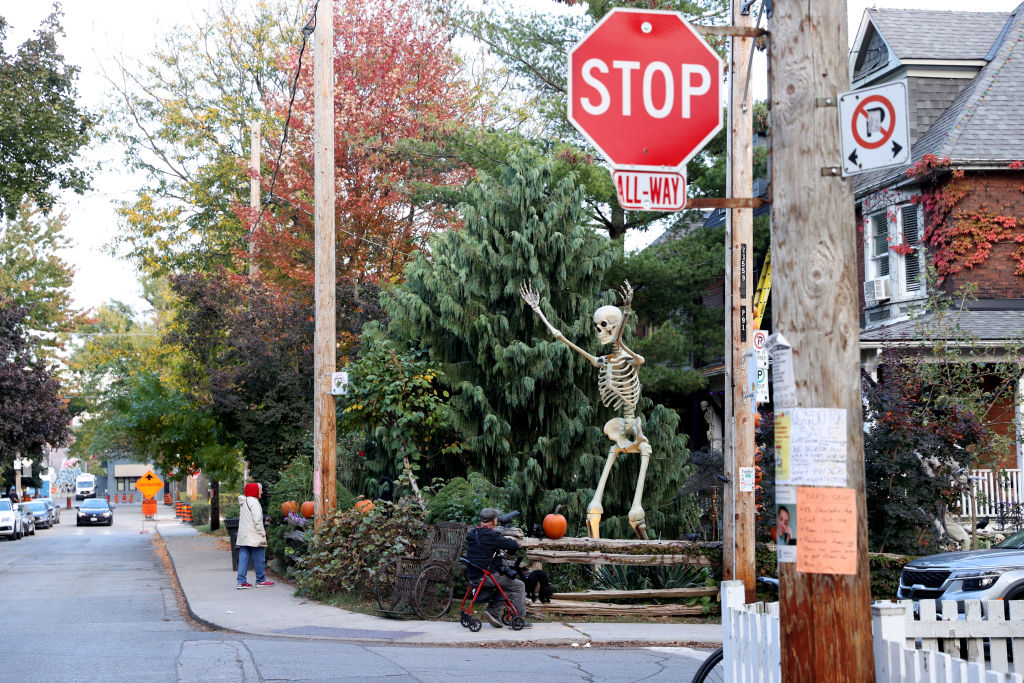
Vaughn Hazen is committed to Halloween. Though his annual cemetery-themed yard display in Montreal, Canada begins at the start of October, planning it is a much longer affair. The production includes decorations both purchased and homemade, and features a mausoleum, pumpkin patch, and a Nightmare Before Christmas section complete with a 13-foot Jack Skellington.
“We don't consider Halloween to be a day of the year,” says Hazen, who began going all out for the holiday when he and his wife became empty nesters. “It’s kind of a way of life.”
Hazen is not alone in this. Halloween seems to come earlier each year: from grocery store aisles filled with costumes in July to viral decorations selling out the first week of October, shoppers and retailers alike are no longer waiting to embrace the holiday spirit.
For many the holiday is an excuse to indulge in outlandish outfits and Instagram-worthy home items—but the festivities come with a high cost.
More from TIME
The National Retail Federation estimates that American consumers will spend a record $12.2 billion on this year’s Halloween festivities—usurping last year’s record of $10.6 billion. Halloween enthusiasts are expected to spend roughly $4 billion on costumes and decor this year and roughly $3.6 billion on candy. Even in the face of high inflation and interest rates, the rise in holiday spending indicates that consumers are not yet tightening their wallets.
“They're prioritizing essentials, but they're also prioritizing special events and celebrations that are meaningful for them and their families. And Halloween is certainly going to be one of those,” says Katherine Cullen, vice president of industry and consumer insights at the NRF.

The Changing Face of Halloween
For previous generations, Halloween was a holiday almost exclusively celebrated by young kids—but that’s no longer the case.
“It’s evolved from just a kids holiday,” Cullen says, noting that NRF data reveals that close to three quarters of adults plan to celebrate Halloween, with adults between the ages of 35 and 44 leading the spending.
Part of the outsized increase in enthusiasm, and spending, can be attributed to the pandemic. “It's not just that we're going back to what we were doing before, but rather we're saying, ‘Well, I didn't get to do it during 2020 and 2021. So I'm going to make up for it now and spend a little bit more,’” explains Jadrian Wooten, an associate professor of economics at Virginia Tech.
Social media has also played a heavy hand in lengthening the holiday season and driving trends, Wooten says, with enthusiasts eager to show off their Halloween outfits, displays, and celebrations.
Online trends often shape what costume or decor will be the most sought after item of the season, and consumers are willing to splurge on more expensive, popular items. Home Depot’s $299 12-foot skeleton has attracted viral fame every year since it was first put out by the company in 2020. And this year, a jack-o’lantern named “Lewis,” which retails for $180 at Target, went viral on social media in early October, immediately selling out.
Jennifer Corcoran—who decorates her own yard in Nashville, Tn. for the holiday along with her neighbors’—is constantly on the lookout for new items. “It’s become kind of like keeping up with the Joneses,” she admits. “You see people's photos of stuff and think, ‘I have to have that too.’”
She adds that, when products are posted on Facebook groups for Halloween lovers, they tend to sell out in minutes. What’s more, many have begun purchasing year round to ensure they get the most sought-after items before they sell out. “People are now buying the best stuff in July,” she says.
Her expenses each year include an average of $800 on full-sized candy bars for neighborhood trick-or-treaters, a cost she says she figures into her annual budget. “A lot of things get cut out to pay for the Halloween stuff,” says Corcoran. “I don't think I’ve had my nails done once this year.”

Big Business
For many shoppers, the holiday is synonymous with Spirit Halloween, the seasonal store that appears every year to sell decor, costumes, and other items. The company employs under a unique business model, occupying brick-and-mortar stores across the U.S. and Canada for only a few months at a time. The store operates almost 1,500 locations, with some opening as early as July, and all closing on November 2nd.
The company has grown more than ten-fold in the past twenty years, says CEO Steven Silverstein, who largely credits the holiday’s growing reach.
“We've really expanded [the holiday] and created many new points of entry. In particular, things like home decorating, costuming, and events like parades, office parties, or trunk-or-treats.” Even though the store is only top of mind for consumers a fraction of the year, sourcing locations and managing the supply chain means that the company is “24/7, 365 Halloween.”
This, Silverstein says, gives them an advantage against traditional big box stores like Target and Walmart—which might serve as one-stop shops for everything from candy to costumes, but aren’t able to keep inventory on shelves for as long.

As people gear up for holiday spending, Wooten, the economics professor, notes that it’s important to consider the necessity of seasonal spending—especially as NRF data indicates that only 32% of consumers expect to reuse Halloween items from previous years.
“There are industries and occupations that really rely on this sort of spending, whether it's Halloween, Thanksgiving, the winter holidays,” he says. “There's employment opportunities, there's new sales that are good for consumer confidence. But at the same time, if you think about it from a consumerism angle, you also have an incredible amount of waste. These holidays are not normally sustainable.”
Corcoran and Hazen have found ways to weave sustainable practices into their celebration, whether it be reusing decorations year-after-year or sharing what they own with neighbors. For them, considerations like high costs and effort involved in Halloween planning are all worth it when they see the joy it inspires in kids—and kids at heart. “It's just fun to do something that makes other people happy,” says Corcoran. And though the big day is almost upon us, Hazen says there’s no time to waste. “We're already planning for next year.”
Correction, Oct. 31
The original version of this story misstated the surname of a Halloween enthusiast. She is Jennifer Corcoran, not Jennifer Dunahee.
More Must-Reads from TIME
- Why Biden Dropped Out
- Ukraine’s Plan to Survive Trump
- The Rise of a New Kind of Parenting Guru
- The Chaos and Commotion of the RNC in Photos
- Why We All Have a Stake in Twisters’ Success
- 8 Eating Habits That Actually Improve Your Sleep
- Welcome to the Noah Lyles Olympics
- Get Our Paris Olympics Newsletter in Your Inbox
Write to Simmone Shah at simmone.shah@time.com